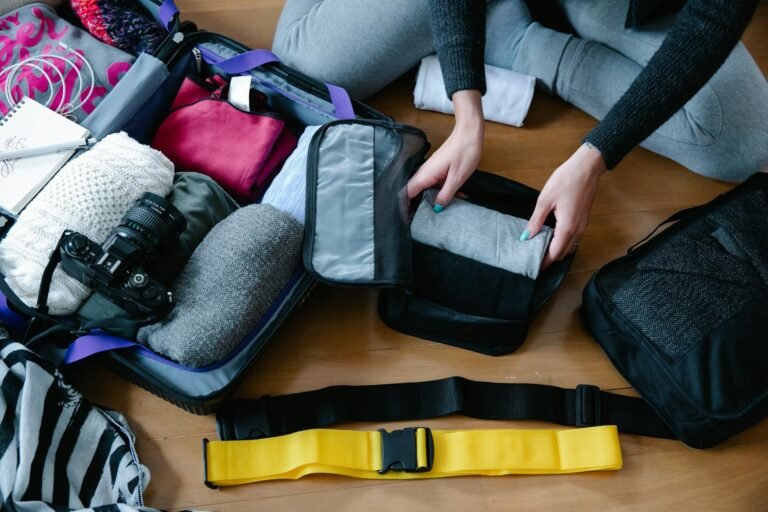Europe has a reputation for being expensive, but it doesn’t have to be. With smart planning, you can enjoy historic cities, scenic train rides, and even a touch of luxury without overspending.
Travelers often find that exploring Europe on a budget can still be comfortable and memorable. Affordable flights, city passes, and boutique-style hostels kept costs low while still making the experience feel special.
This guide offers seven key tips for affordable travel in Europe. It combines practical advice with smart money-saving strategies. You’ll learn about flexible flight searches, half-fare rail cards, and staying in upscale hostels. For more tips, check out this expert resource on how to visit on a budget.
This guide is perfect for Americans looking to travel Europe affordably. It suggests staying in shoulder season for 40% hotel savings and using night trains as lodging. You’ll also find tips on city welcome cards that offer museums and metro access.
Expect clear, actionable advice for traveling Europe on a budget in 2025. These tips will help you enjoy Europe without breaking the bank.
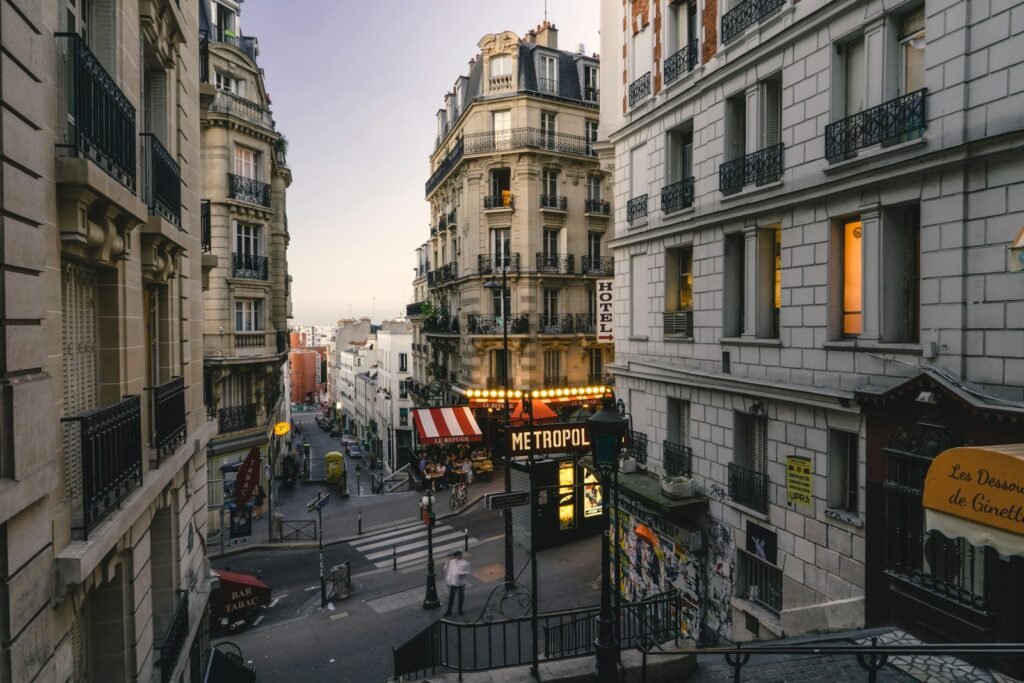
The Short List
- Use flexible flight tools and off-season dates to unlock the least expensive way to travel to Europe.
- Adopt slow travel to cut daily costs; monthly rentals and tram passes lower outlays with upscale comfort.
- Blend trains, night trains, and budget buses for europe affordable travel across regions.
- Choose luxury hostels or monthly apartments for the most affordable way to travel Europe without losing amenities.
- Leverage regional rail deals and city cards to pair transport with attraction savings.
- Prioritize light, carry-on-only packing to avoid fees and move smoothly between hubs.
- Track spending with city benchmarks and shop markets for smart dining on how to visit Europe on a budget.
Planning a Europe Trip on a Budget: Smart Foundations for 2025 Travel
Plan your trip with cost in mind, not as a mystery. Start with flights and places to stay, then add daily needs. This method is great for beginners and allows for special moments without breaking the bank.
Setting a realistic budget by category: flights, lodging, local transport, food
Begin with flights and places to stay. Use Google Flights to find the best deals. Then, look at Skyscanner for the cheapest options.
Choose a place to stay that’s close to public transport. This saves money and makes getting around easy. Don’t forget to add a little extra for small treats and surprises.
Keep track of your spending each week. This helps avoid overspending. When choosing where to stay, check if it’s safe and close to public transport.
Daily cost benchmarks: Eastern vs. Western Europe
In Eastern Europe, spend about €50–€70 per day. This covers meals, transport, and some attractions. In Western Europe, aim for €100 per day for similar experiences.
Look for cities that offer great value. Places like Kraków or Sofia can save you money. For longer trips, consider renting a place for a month to save even more.
Using tools like Numbeo, Google Flights, Skyscanner and Tourow for cost checks
Use Numbeo to check prices for food and groceries. Then, look at transport and attraction costs. Use Google Flights and Skyscanner to find the best flight deals, or search directly on our Flights page.
With Tourow, you can compare flights, hotels, car rentals, and travel services all in one place, helping you get the most value for your trip.
Consider using city cards for attractions. This helps keep your budget in check. Look at many options when booking to find the best deals. With Tourow, you get access to hundreds of airlines and over 4 million hotels and travel services worldwide, making it easier to find the best deals in one place.
Off-Season and Shoulder-Season Wins for europe affordable travel
Once summer fades, the best deals appear. From late October to early April, you can save big on Europe trips. With flexible dates and a light wardrobe, exploring Europe’s culture becomes easy and enjoyable.

Why avoiding peak summer lowers prices and crowds
Summer is the busiest and most expensive time. But visiting in the shoulder seasons—September to October and March to April—brings fewer crowds and lower prices. This way, you can enjoy Europe’s highlights without breaking the bank.
Shorter days mean fewer people at museums and attractions. You can enjoy a peaceful evening stroll. For more on the benefits of off-season travel, check out this guide.
Seasonal lodging discounts up to 40% and attraction savings
Winter offers up to 40% off at luxury hotels. This lets you upgrade your stay without spending more. Many cities also offer cheaper entry to museums during the cold months.
- Hotels and Airbnbs show broader availability and softer rates.
- City passes and museum cards gain extra value with shorter lines.
- Flexible-date scans on Skyscanner help how to visit europe cheap with better fare windows.
Best off-season picks: Southern Europe’s mild winters
Southern Europe stays warm when it’s cold elsewhere. Cities like Rome, Lisbon, Seville, and Valencia keep their outdoor cafes and markets alive. Enjoying the local culture is easy and fun.
With fewer tourists, you can easily book top restaurants and hotels. This is the secret to enjoying Europe’s finer things without the high prices.
Slow Travel Strategy: best way to travel around europe while cutting costs
Slow travel means taking your time and enjoying every moment. It’s perfect for those who love to dive deep into a place. You can explore Europe on a budget without missing out on culture or style.
Plan your trip in weeks, not days. This way, you can spread out the cost of flights over a longer period. Living like a local, by visiting markets and enjoying quiet afternoons, helps you see more of Europe without spending a lot.
How longer stays drop per-day transit costs dramatically
Staying longer can make travel cheaper. A $500 flight might seem expensive for a short trip. But over two weeks, it becomes much more affordable. This is a great way to see Europe’s beauty without breaking the bank.
- Base in one hub for 10–14 nights, then branch out by rail or bus.
- Choose monthly transit: a Prague tram pass pays off in roughly 10 rides, then lowers each trip’s cost.
- Use regional cards with care: Switzerland’s Half Fare Card suits longer, rail-forward itineraries.
Weekly and monthly rate discounts for apartments and hostels
Booking for longer periods can save you money. In Split, a monthly Airbnb costs around $37 per night. Upscale hostels often offer discounts for longer stays, making travel more affordable.
- Filter for “weekly” and “monthly” on Airbnb or Booking.com to unlock hidden reductions.
- Negotiate directly for stays over 14 nights; many properties extend unpublished deals.
- Schedule laundry, groceries, and workspace needs once settled to reduce incidental spending.
Spreading paid activities between free days
Balance paid attractions with free days. Visit the Louvre one day and enjoy a picnic on the Seine the next. This mix is key to exploring Europe without overspending.
- Leverage free highlights lists: dozens of no-cost sights in London, Paris, and Berlin.
- Build a rhythm: premium museum, then parks or neighborhoods like Le Marais or Alfama.
- Use city transit passes to cluster visits, another tactic for how to visit multiple european countries cheaply.
Slow travel makes your journey more comfortable and affordable. It’s a smart way to enjoy Europe’s culture and beauty without spending too much.
Cheapest Flights Tactics: cheapest way to go to europe from the United States
Smart airfare strategy is key to touring Europe on a budget. Look for flexible dates and smart routes. Also, pack light to find the cheapest flights without losing comfort.
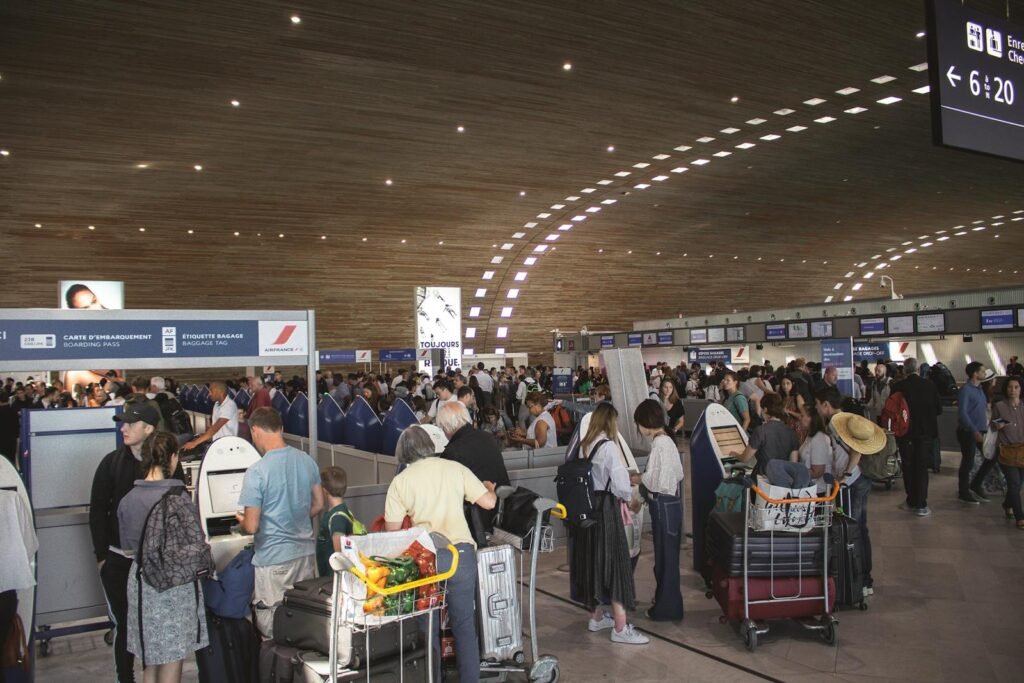
Skyscanner “Everywhere” searches and flexible date/month hacks
Skyscanner’s “Everywhere” feature and month-long calendars show hidden fare lows. Fly midweek and aim for overnight flights. Look for deals in hubs like Dublin, Lisbon, or Madrid.
- Toggle “whole month” to spot sub-market lows at a glance.
- Test nearby U.S. gateways like Boston, Newark, or Chicago for price breaks.
- Travel carry-on to avoid fees; add seat selection only if essential.
Using a VPN to compare country-specific fares
Fare displays change by market. A VPN, like NordVPN, helps compare prices across regions. This is great for solo travelers or families. Always check total costs, including payment card fees.
- Switch to European locales to check localized portals and currency shifts.
- Reprice the same itinerary after each switch for a clean budget snapshot.
- Use this tactic alongside a budget airlines vs train travel in europe cost comparison to judge true end-to-end value.
Secondary airports and positioning flights for extra savings
Secondary airports like London Stansted, Milan Bergamo, and Paris Beauvais offer low fares. Book a positioning flight to a cheap transatlantic gateway first. Then, connect to your final destination. This can be the cheapest way to travel to Europe if booked early.
- Scan multi-airport options around your origin and destination.
- Land at a quiet airport with fast rail links to reduce transfer time.
- Balance add-on costs with a budget airlines vs train travel in europe cost comparison for each leg.
For a luxurious yet affordable trip, aim for overnight arrivals with easy rail transfers. With flexible dates, VPN checks, and smart use of secondary airports, you can find great deals. This way, you can enjoy Europe without breaking the bank.
Trains, Buses, and Rideshares: cheapest way to get around europe
Travelers can save money by mixing trains, buses, and rideshares. Book early for fast travel, use buses for cheap fares, and rideshares for last-minute trips. This method keeps travel affordable and hassle-free.
Advance booking on national rail sites and night train savings
Book directly with Deutsche Bahn, ÖBB, or České dráhy for special deals. Early booking can cut costs on trips like Berlin to Prague. Night trains offer a bed and wake up at your destination.
Look for Sparpreis or SparNight deals for a quiet, on-time journey. This is a smart way to save on train or bus travel when time is important.
- Target overnight links such as Amsterdam–Copenhagen to combine transport and lodging savings.
- Use group day tickets in regions like Bavaria–Bohemia to stretch value across borders.
- Travel light; European night services typically allow luggage at no extra cost.
Budget bus networks like FlixBus for ultra-low fares
Long-distance buses are often the cheapest option. FlixBus offers routes across 35 countries for as low as €5. They provide Wi-Fi, power outlets, and bathrooms.
Eurolines is another budget option for direct trips. It makes affordable travel possible on any day.
- Adjust plans up to minutes before departure with low change fees, ideal for evolving itineraries.
- Choose overnight departures to save on lodging and arrive ready for morning check-ins.
- Compare run times; a slight schedule shift can cut both price and traffic risk.
Discount transportation options like BlaBlaCar in europe
BlaBlaCar offers carpool and bus rides in 22 countries. It’s great for last-minute plans. Seats often appear one to three days before travel.
It’s a good option for spontaneous trips, filling gaps between rail and bus schedules. It’s the cheapest way to travel, with a quick carpool when trains or buses are full.
- Filter by driver ratings and luggage space to suit premium gear or extra bags.
- Use rideshare to reach secondary hubs where fast trains or FlixBus routes begin.
- Favor midday departures for calmer roads and consistent arrival times.
Combine early rail bookings, low bus fares, and rideshares for the cheapest travel. This approach keeps travel affordable and reliable, perfect for city breaks and long trips.
Rail Passes and Regional Deals: using eurail or rail pass to explore europe cheaply
Smart rail strategies help save money without sacrificing comfort. Passes are great for those who like to be spontaneous. On the other hand, fixed plans often get better deals with advance fares.
Adding youth and regional discounts can really add up. This is true for both border crossings and local trips. It’s also important to know how to use the European Youth Card for discounts.

Eurail flexibility vs. point-to-point tickets
The Global Pass is perfect for exploring multiple countries. It offers wide access and a long validity period. Non-European residents use Eurail, while Europeans prefer Interrail.
For fixed plans and short trips, point-to-point tickets are better. Booking early on SNCF, Deutsche Bahn, Trenitalia, or Renfe can save money. But, it means giving up flexibility.
Local/regional passes: city tram/metro cards and country half-fare cards
City passes and multi-day cards can cut costs after a few rides. In Prague, they quickly pay off for tram and metro users. In Switzerland, the Half Fare Card halves most fares, ideal for scenic rail trips.
Tourist cards, like the Berlin WelcomeCard, offer museum access and metro travel. Pairing these with youth card discounts can save even more on attractions and transit.
Group and day-ticket bargains that stack savings
Regional day tickets are great for short trips and border crossings. For example, Bavaria–Bohemia day passes reduce costs on shared routes. They also allow for flexible stops.
Similar deals exist in Germany, Italy, and Austria. They’re valid on regional trains and local buses or trams. Families and small groups should check for child, youth, and senior discounts.
Combining regional day tickets with city passes can create a cost-effective plan. It keeps comfort high while keeping expenses in check.
Accommodation Playbook: affordable alternatives to staying in hotels in europe
Travelers can find luxury and savings with hostels, house sits, and exchanges. These options let you explore Europe affordably without sacrificing comfort. You can visit Europe on a budget while enjoying high standards.
Hostels, designer “luxury hostels,” and private rooms
Hostelworld offers a wide range of stays in Europe. You can find everything from dorms to luxury hostels. These places have private rooms, modern beds, and cool amenities like pools and cinemas.
For those who like hotels but want to save, try Yotel or The Student Hotel. Travelodge has family rooms that are a good deal. Staying outside the city center can also save money while keeping you close to attractions.
Worldpackers work exchanges for free stays and community
Worldpackers has over 4,000 exchanges in hostels, farms, and NGOs. It’s a way to get free lodging and meet new people. The site offers support and insurance for a small fee.
Look for jobs that fit your skills, like helping with events or gardening. Make sure to check host reviews and agree on details before you go. This way, you get great hospitality and make real connections.
Trusted house sitting and Couchsurfing for zero-cost lodging
TrustedHousesitters is a top site for house and pet sitting in the UK and Europe. You can find long-term sits that pay for the year’s membership. Couchsurfing is another great way to stay for free and meet locals.
Always check the host’s references and agree on what you’ll do before you stay. These options are great for saving money and experiencing Europe like a local.
Go Beyond the Hotspots: europe on a budget via off-the-beaten-path cities
Avoid crowded areas for better deals and a more authentic feel. This way, you can enjoy Europe’s charm without spending too much. Look for cities and districts with unique cafes, markets, and galleries.
These places offer great experiences at lower prices. You can easily reach famous spots by public transport. This lets you save money while enjoying your trip.
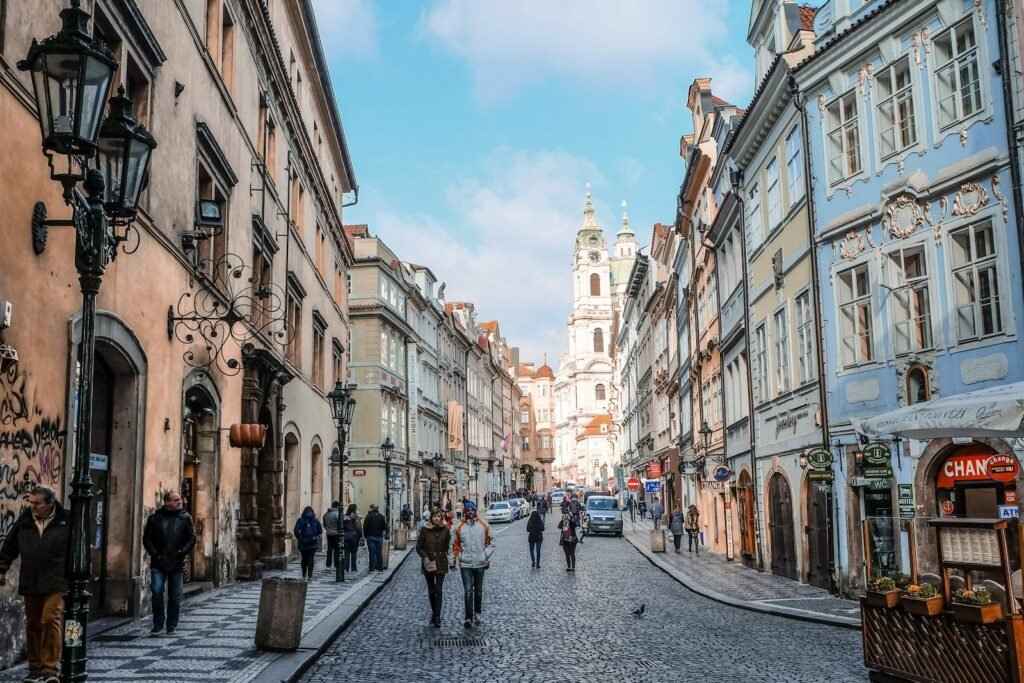
Western Europe swaps: Haarlem for Amsterdam, Bologna for Rome
- Haarlem over Amsterdam: canal charm, the Frans Hals Museum, and boutique stays near Grote Markt—often at slimmer rates, yet 15 minutes by train to Centraal.
- Bologna over Rome: portico-lined streets, Michelin Bib Gourmand trattorie, and university energy, with quick rail to Florence and Modena.
- Leipzig or Dortmund over Berlin: thriving arts scenes, repurposed industrial spaces, and concerts without big-capital markups.
- Bordeaux over Paris: riverfront promenades, wine culture, and handsome Haussmann blocks—elegant yet calmer on the wallet.
These swaps help you enjoy Europe’s culture and food without breaking the bank. You can find stylish places to stay at affordable prices.
Eastern Europe value: Serbia, Bulgaria, Romania, Poland
- Belgrade: dynamic nightlife on the Sava, modern bistros, and full meals around local prices that favor longer stays.
- Sofia: Roman ruins, Vitosha views, and metro convenience that makes europe on a budget feel effortless.
- Bucharest: Belle Époque facades, leafy squares, and cafés suited to slow mornings and fair rates.
- Kraków: storied Old Town, Kazimierz galleries, and robust transit—how to travel europe cheap with depth and heritage.
Expect great food and accommodations at low prices. You’ll also find free attractions on certain days.
Staying outside city centers for lower nightly rates
Stay in neighborhoods a bit further from the city center to save money. In Prague, areas like Vršovice, Holešovice, or Žižkov offer great pubs and easy access to the metro.
Look for stylish hostels and guesthouses. Czech Inn and Sir Toby’s are great options. They have social areas, garden barbecues, and private rooms. This way, you can travel cheaply but stay in style.
Saving Money on Food While Traveling Europe
Elegant taste doesn’t have to break the bank. Travelers who love fine dining can save money in Europe. They do this by choosing affordable places and eating at the right times.
Market shopping and cooking in shared kitchens
Explore local markets for fresh produce and local goods. In Italy, a simple basket of ingredients can turn a kitchen into a trattoria. It’s much cheaper than eating out.
Hostels like Generator or Selina offer communal dinners for around €10. These meals are a great way to meet people and learn about budget travel in Europe.
Street food, set lunch menus, and brunch strategies
Try famous street foods like gyros in Athens or crêpes in Paris. They’re quick, tasty, and won’t empty your wallet. Look for set lunch menus in Spain or France for a full meal at a good price.
Brunch in cities like Lisbon or Barcelona is a great way to save money. It’s a big meal that can replace lunch and dinner. This keeps your day flexible and your wallet happy.
Picnics in parks and using hostel kitchens
Make a fancy picnic with bakery items and market finds. Enjoy it in Paris, London, or Prague. It’s a stylish way to save money.
Use the hostel kitchen to make snacks and breakfast. This way, you can enjoy picnics and market meals without overspending. It’s a smart way to travel on a budget while enjoying good food.
Local Transport and Walking: how to travel inexpensively in europe cities
Walking is key in elegant cities. It keeps costs down and connects you with the local vibe. This way, you can enjoy the sights and sounds of Europe’s cities without spending a lot.
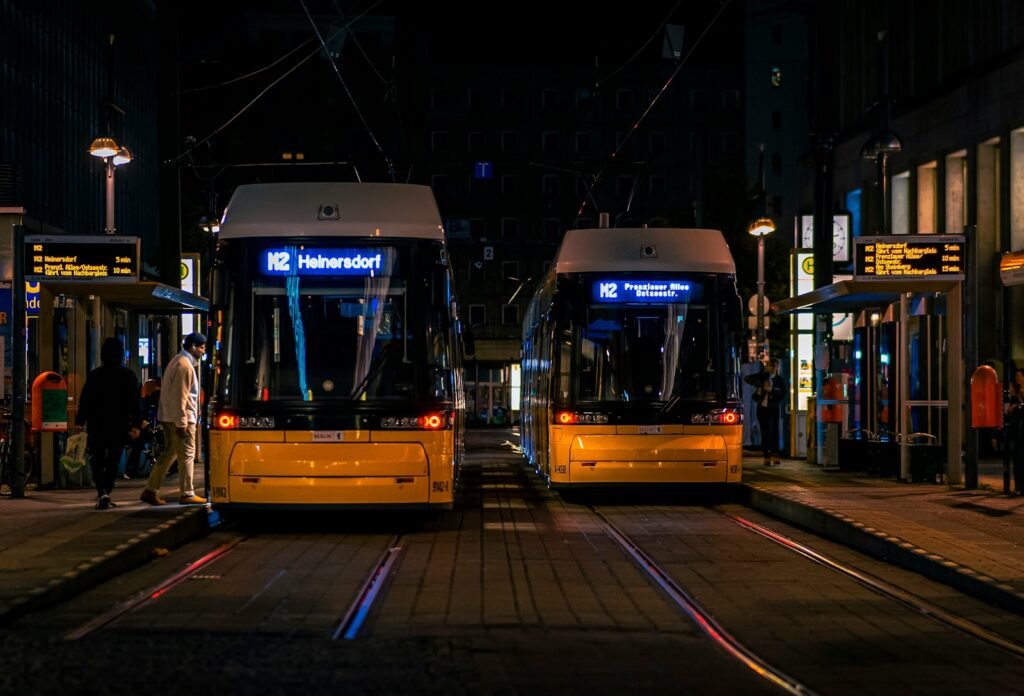
Public transport in cities like Paris, Berlin, Prague, and Lisbon is reliable. Walking and using passes can make your trip efficient and affordable. It’s a smart way to see everything you want to without breaking the bank.
Unlimited day/weekly passes vs. single tickets
For those who plan to travel a lot, passes are often cheaper than single tickets. Berlin’s WelcomeCard offers discounts on attractions, making your trip even more affordable. In Prague, monthly passes are great for long stays, helping you save money.
- Map your stops, then price a pass against likely trips.
- Favor multi-day products on museum-heavy days.
- Keep the pass handy for last-minute detours or rain.
Bike share programs and safe city cycling
Bike shares are a budget-friendly way to explore cities. Amsterdam, Copenhagen, and Berlin have extensive networks. They often work with public transport cards for easy access.
- Choose protected lanes and riverside routes for calm riding.
- Use front lights and reflective bands at dusk.
- Dock often to pause for coffee, markets, and galleries.
Walking to discover neighborhoods and reduce fares
Walking is a great way to explore neighborhoods. It’s free and lets you discover hidden gems. From early morning bakeries to evening squares, walking offers a unique experience.
- Cluster sights by neighborhood to limit transit swipes.
- Follow boulevards one way, cut back via side streets.
- Blend steps with short metro hops to stay fresh and on time.
By walking, using passes, and biking, you can travel affordably and enjoyably. This approach is a key part of exploring Europe on a budget.
Tech, Connectivity, and Money: avoiding roaming and fee traps
Smart tech and money habits make luxury travel easy and affordable. The goal is to only pay for what adds value. Use tools that work worldwide to avoid extra costs.
Local SIMs or eSIMs instead of costly roaming
Roaming can quickly become expensive. Get a local SIM from Vodafone, Orange, or TIM when you arrive. Or, use an eSIM before flying for quick service.
If your phone is locked, a portable MiFi is a good solution. It lets many devices share one plan.
To save data, use hotel and hostel Wi-Fi. Also, connect at cafes or museums. This way, you can stream and use maps without extra fees.
Avoiding ATM and airport exchange fees
Avoid airport currency desks for better rates. Use bank ATMs from big networks. Say no to “dynamic currency conversion” to avoid extra charges.
Look up rates with apps, then exchange or withdraw cash in town. This way, you save money for food and culture.
Free messaging and calling apps while on Wi‑Fi
Use Wi-Fi and apps to cut down on phone bills. FaceTime is great for Apple-to-Apple calls. WhatsApp is good for group chats and photos.
Skype has low rates for international calls to landlines. Viber is a free option for calls between users. Download big files at night when Wi-Fi is free. Set maps for offline use. With these tips, you can travel cheaply without missing out on comfort and connection.
City Passes and Free Activities: how to visit europe on a budget
Smart planning turns major capitals into value playgrounds. To master how to visit europe on a budget, layer free cultural moments with timed entry and transit perks. This way, you get shorter queues, lower costs, and more time in world-class spaces.

Tourist info centers for discounts and free maps
Start at the official tourist information center. Get free maps, learn about neighborhood events, and get same-day discounts. Staff often share info on free concerts, open-air films, and museum late nights. This is a quick way to enjoy Europe without spending a lot.
- Request up-to-date listings for festivals, markets, and pop-up exhibitions.
- Compare multi-day transport offers to align with dense sightseeing days.
- Note weekly free-entry windows at galleries and civic museums.
All-inclusive city cards with transport and museums
When culture density is high, all-inclusive cards are key. Products like the Berlin WelcomeCard or Oslo Pass offer unlimited public transport, museum entry, and dining reductions. This is a smart way to explore Europe during busy itineraries.
- Block a “heavy” day to maximize included museums and landmarks.
- Use early starts for landmark openings; add night hours for bonus value.
- Track what’s covered to avoid duplicate payments on separate tickets.
For extra tactics on free events and food savings, see this curated guide on ways to travel Europe on a budget. Tailor your card to the city’s calendar.
Free walking tours and skip-the-line planning
Free walking tours, like SANDEMANs, offer strong orientation and local context on a tip-based model. Pair a morning tour with timed entries booked through recognized platforms. This protects peak hours at icons like the Eiffel Tower or the London Eye. It’s a smart way to explore Europe without wasting time in lines.
- Reserve skip-the-line slots in advance to compress wait times.
- Map tour start and end points near your next timed entry.
- Fill gaps with nearby free spaces: parks, river walks, and markets.
This cadence—tour, timed entry, and free moments between—keeps spend efficient. It elevates how to visit Europe cheaply while preserving premium time value.
Traveling as a Pair or Family: cheap europe with kids or families
Traveling with a partner or kids can be smart and affordable. Sharing a place to stay keeps costs down while improving your living space. With good planning, you can explore many European countries without spending a lot.
Splitting apartment costs and family rooms/quad deals
Two people can split the cost of a monthly rental, which is often $1,200 to $1,600. This way, each person pays about what a solo traveler would for a hostel. Families can find quad rooms and family units at places like Travelodge, making it cheaper for everyone.
- Book one-bedroom or two-bedroom apartments to share kitchens and living space.
- Compare weekly versus monthly rates to reduce nightly pricing.
- Use overnight trains to fold transit and lodging into one line item.
Choosing family-friendly hostels and guesthouses
Many European hostels now have private rooms, quiet areas, and play spaces for families. Guesthouses and serviced apartments with kitchens let you make your own meals. This helps keep food costs down, making travel with kids or families more affordable.
- Seek private ensuites in hostels labeled family-friendly or quiet.
- Confirm crib availability and laundry access before booking.
- Favor neighborhoods near parks and transit to streamline days.
Kid-friendly itineraries that favor parks and free sights
Plan your days around parks, riverside walks, and free attractions. Then, add museum visits with city passes to manage costs. Regional day tickets help with travel expenses, making it easier to see many places without spending a lot.
- Alternate high-energy museums with relaxed park time.
- Plan picnic lunches to avoid pricier midday dining.
- Choose walkable historic centers to cut local transit fees.
These tips help families and pairs enjoy Europe while keeping costs in check. They offer a way to travel smartly and affordably.
Backpacking Europe Without Spending a Fortune
Backpacking Europe on a budget is a smart plan. It combines cheap travel, cozy hostels, and careful spending. This way, you can explore Europe affordably without giving up comfort or style.

Night trains, ride-shares, and regional trains for budget hops
Night trains are like free hotel rooms, moving you across borders while you sleep. Look for SparNight fares on Deutsche Bahn and Czech Rail advance tickets for cheaper prices. Bavaria–Bohemia day tickets also offer great value for cross-border travel.
For more flexibility, BlaBlaCar offers verified ride-shares with reviews. This is perfect for quick city-to-city trips when schedules are tight.
Booking regional trains early through Rail Europe, Trainline or national rail sites can save a lot. Pair these with FlixBus for even lower fares. This mix is great for budget travel in Europe, even during busy times.
Luxury hostels with social spaces and kitchens
Luxury hostels offer comfy beds, private rooms, and cool lounges without high prices. You can cook in communal kitchens, saving on food. Use Hostelworld to find the best deals, balancing comfort and cost.
This option is perfect for those who want style and privacy but also save money. It’s a smart way to explore Europe without breaking the bank, without sacrificing comfort or atmosphere.
Sample budget-friendly europe itinerary under 500 dollars (select segments)
For a short trip, try a three-leg journey in Eastern Europe. Start with a FlixBus from Kraków to Bratislava, then take an overnight train to Budapest. Finish with a regional train to Pécs. Use hostel kitchens and free tours to keep costs low.
- Transit: two FlixBus rides from €5–€15 each, plus one night train booked early for a modest fare.
- Lodging: two nights in luxury hostels with kitchens; the night train replaces one hotel stay.
- Activities: museum day passes, local markets, and park picnics for relaxed pacing.
This itinerary shows how to see Europe on a budget of 500 dollars. For more tips and fare examples, check out this guide on budget travel in Europe. Then, customize it to fit your travel plans and preferences.
least expensive way to travel to europe
Travelers looking for the cheapest way to explore Europe can find it. Mix smart timing, flexible flights, and smart ground transport with creative lodging. This combo offers the best value, making travel affordable and enjoyable.
Combine off-season timing with flexible flight searches
Traveling in the off-season can save up to 50% on hotels. Use tools like Skyscanner or Tourow to find the best deals. Try using a VPN for better prices and choose secondary airports for cheaper flights.
Use buses and night trains; compare with budget airlines
For the cheapest travel, compare buses and trains to budget flights. Options like FlixBus offer Wi-Fi and flexibility. Add BlaBlaCar for last-minute plans and save more with city passes and group rail tickets. Budget buses and trains keep costs low between cities, but once you’re there, hop-on hop-off sightseeing buses like Big Bus Tours are a budget-friendly way to explore local landmarks.
Leverage work exchange, house sitting, and hostel kitchens
Use work exchanges and house sitting to save on costs. Cook in hostels or apartments to cut dining expenses. This approach makes travel affordable without sacrificing style or comfort.
The Bottom Line
Planning well makes traveling in Europe affordable and easy. Look for off- or shoulder-season trips for fewer crowds and lower prices. Slow travel lets one flight cover more days, saving money.
Choose monthly apartments or luxury hostels with kitchens. This way, you can control your food costs without sacrificing comfort.
Traveling smart affects your budget and mood. Book national rail tickets early and use night trains when you can. Mix in FlixBus, BlaBlaCar or Big Bus Tours for some trips.
Use Rail Europe, Eurail or regional passes for areas with many routes. Also, get city transport or welcome cards and group day tickets. These steps help you travel cheaply in Europe while keeping things convenient.
Everyday choices also matter. Shop at markets for fresh food, eat set lunch menus, and walk or cycle when it’s fun. Try Worldpackers or TrustedHousesitters for some stays to save on lodging.
Together, these strategies show the cheapest way to explore Europe. They let American travelers enjoy comfort, culture, and savings.



